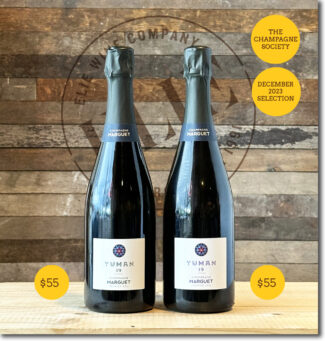The Champagne Society December 2023 Selection: Champagne Marguet
Marguet’s Naturally Grown Champagne Channels His Biodynamic & Homeopathic Practices
Champagne Marguet
Grand Crus: Ambonnay And Bouzy
Champagne Marguet ‘Yuman 2019’ Premier Cru Blanc de Blancs Brut Nature ($55)
AND
Champagne Marguet ‘Yuman 2019’ Premier Cru Blanc de Noirs Brut Nature ($55)
True disciples call it wine’s inevitable future, and even the naysayers are beginning to admit that after years of practicing biodynamics, the dividends are irrefutable. And nowhere in Champagne is this more evident than at Champagne Marguet, where Benoît Marguet is one of the few growers in the region to have thrown himself, both body and soul, vineyard and cellar, into homeopathy.
It’s easy to think of Champagne as a spiritual substance; after all, it was created by monks and the very airiness of its identity seems celestial. The cornerstone of biodynamics is a view of the vineyard, and its subsequent produce, in like terms—as a singular organism capable of self-healing and self-propagation. Natural material alone sustains the soil; chemical fertilizers and pesticides are forbidden and instead, a range of animals are encouraged to create a rich, fertile environment in which the vines can thrive.
For Benoît Marguet, this goes beyond biodynamics as a concept; it’s a vision of complete harmony in every stage of winemaking and an improvement in his own personal life which translates into his Champagne.
Exploring Pinot Noir Country: The Montagne de Reims
Forming a broad and undulating headland that covers five thousand acres of thicket and vineyard, the Montagne de Reims stretches 30 miles east to west and, north to south, is about five miles wide. The vines hug the limestone slopes of the western and northern flanks and are planted in a huge semicircle that extends from Louvois to Villers-Allerand.
This is Pinot Noir country (except in Trépail and Villers-Marmery, where the Chardonnay can be found). The most northerly of Champagne’s four demarcated regions, the Montagne de Reims is also the most well-known, with more Grand Cru sites than anywhere else in the AOP. Tectonics gave the region mountains of chalk, and the Romans added their two cents by leaving behind huge limestone pits known as crayères. Within, the humidity remains at around 60% and temperatures at a steady 57°F; perfect cellaring conditions to soften the cold-climate acids of Champagne with time on lees. As a result, Louis Roederer, Ruinart, Veuve Clicquot, Krug, Taittinger and Mumm all store wine here.
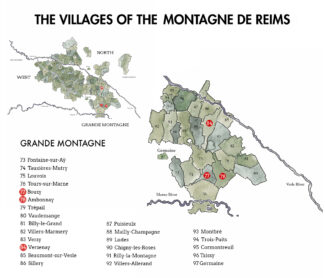
Benoît Marguet
“A Vitality About The Fruit That Makes It Feel Truly Alive.”
Champagne Marguet has been a bellwether for innovation since 1883, the year that Émile Marguet began to graft his vines onto American rootstocks in the face of the impending invasion of phylloxera. Alas, so ridiculed was the notion throughout Champagne that Marguet wound up tearing out the grafted vines and promptly declared bankruptcy.
Ratchet forward a century and a half: In 2006, Émile Marguet’s distant scion Benoît Marguet joined forces with Hervé Jestin, the former chef de cave of Duval-Leroy, and began to produce a special homeopathic and biodynamic super-cuvée called ‘Sapience’, first released in 2013. Being on the cutting edge of trends has finally paid dividends.
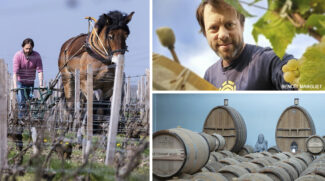
Today, Benoît farms 25 acres of vines, all using biodynamic practices. Most are owned by Marguet himself while the rest are leased from relatives. Among them are eight different lieux-dits with an average vine age of 42 years; each is bottled under the name of the plot and reflects the minute soil differences that exist throughout his holdings as well as the Massale-select varieties he suits to his various terroirs—among them Les Crayères, Les Bermonts, Le Parc and Les Saints Rémys.
The Horses, The Vines and The Eggs
Two techniques keep Benoît Marguet close to his passion; first, since 2009, he has plowed his acres with a pair of draft horses. He argues that by using this method of cultivation roots are forced deeper towards the water table surface, providing a better water supply. In addition, he treats the soil with preparations made of essential oils, tisanes, nettles, citronella, lavender and rhubarb. “The well-being of the soil is a priority,” he points out. “The horse is in connection with the three elements of terroir, the mineral (chalk), the vegetal (vine and flora) and the animal (fauna and human interaction).”
Next, in the cellar, he continues to adhere to the principles of biodynamics by working the wine according to lunar cycles. Under the conviction that the shape of a vat can affect the quality of the wine, he installed special 40-hectoliter egg-shaped wooden cuvée casks produced to his specifications by Tonnellerie Taransaud. The unique shape provides a height/width ratio equal to the Golden Mean or Phi, which Benoît believes is a natural feature repeated throughout the physical world and encourages spiral convection currents and a harmony to better clarify the wine… and his own purpose.
“This symbiosis, with the principle of nature assisting nature, is fascinating research work for me, with influences from various cultures and countries,” Benoît maintains. “In my opinion these fundamental or elemental practices are solutions that instill within our wine its full health benefits, and perhaps even more…”
Blanc de Blancs vs. Blanc de Noirs: Revealing The Fruit
The introductory lesson in Champagne Appreciation 101 is that sparkling wine is made from either light-skinned or dark-skinned grapes, or a combination of both, and all can end up looking a lot the same. This holds especially true in cool-weather climates like Champagne, where vinifying slightly under-ripe grapes is the norm—a point when Pinot Noir and Meunier may not have fully developed their juice-staining anthocyanins. To maintain the desired hue, of course, dark-skinned grapes are pressed gently to keep the skins from bleeding into the juice and the skins separated out quickly.
Holding equally true is the fact that looks can be deceiving. Blanc de Noirs Champagnes made with Pinot Noir and/or Meunier do not share a flavor profile with a Blanc de Blancs made from Chardonnay, and this is the result of both nature and nurture. Generally speaking, a Blanc de Blancs will be a bit lighter and dryer, showcasing the fruits that predominate in Chardonnay’s arsenal—white peach, citrus, green apple and pear. Blanc de Noirs tend to have more body, creamier texture, and the fruit contours are often red; cherry and raspberry, and toasty notes may be more emphatic.
Naturally, the only true lesson in that appreciation course is determining for yourself if you prefer one over the other, and since we are dealing with Champagne, you are more than welcome to respond, “All of the above.”
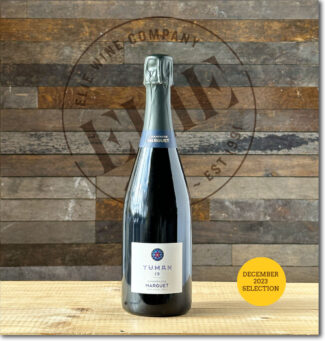 Champagne Marguet ‘Yuman 2019’ Premier Cru Blanc de Noirs Brut Nature D-2/2022 (Sold Out)
Champagne Marguet ‘Yuman 2019’ Premier Cru Blanc de Noirs Brut Nature D-2/2022 (Sold Out)
Yuman is a newer project of Benoit’s that uses organic/biodynamic fruit from two producer friends in Champagne. It is not an estate wine, but is treated just like his other cuvées, seeing a natural fermentation in barrel, and 36 months on the lees. Built upon 100% biodynamic-certified Pinot Noir from the Grand Cru village of Verzenay and Premier Cru village of Cumières, it shows a characteristically crisp acidity behind rich raspberry coulis and aromas of freshly-baked graham cracker.
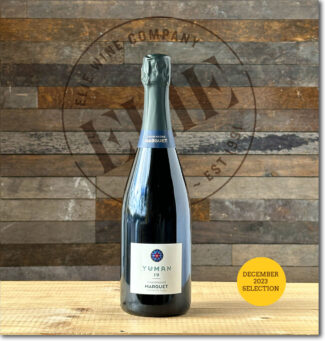 Champagne Marguet ‘Yuman 2019’, Premier Cru Blanc de Blancs Brut Nature D-2/2022 (Sold Out)
Champagne Marguet ‘Yuman 2019’, Premier Cru Blanc de Blancs Brut Nature D-2/2022 (Sold Out)
100% Chardonnay from the Premier Cru village of Vrigny, located in the Petite Montagne de Reims—the northwestern part of the Montagne de Reims. Chardonnay makes this somewhat unusual for Vrigny, which is known primarily for Meunier, a variety that makes up 71% of the vineyard plantings. Bottled in July 2020, disgorged in February 2022 without dosage, the wine shows a beautifully pure, elegant and intensely mineral profile that is textbook Blanc de Blancs.
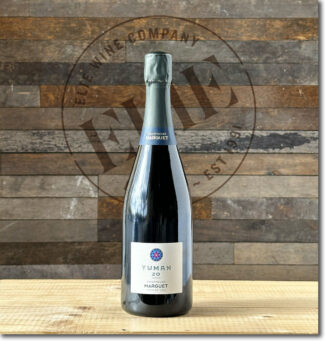 Champagne Marguet ‘Yuman 2020’, Premier Cru Blanc de Blancs Brut Nature D-3/2023 (Sold Out)
Champagne Marguet ‘Yuman 2020’, Premier Cru Blanc de Blancs Brut Nature D-3/2023 (Sold Out)
A cuvée based on the 2020 vintage; 100% organic Chardonnay sourced from Benoît’s friends Premier Crus Villeneuve-Renneville and Villers-Marmery in the Montagne de Reims. The wine is a wealth of intensity with crisp, chalky, mineral notes and perfumed Meyer lemon on the nose and palate.
Grand Cru Bouzy and Grand Cru Ambonnay: Always Rivals
Like the Hatfields and the McCoys (only without rebel flags and shotguns), Bouzy and Ambonnay have a longstanding rivalry built on begrudging respect and competitive moxie. At its closest point, the distance between the two communes is shorter than a long drive with a golf club, and each have shored up a reputation for superlative wines from the south side of the Montagne de Reims hill.
Yet connoisseurs will happily point out their favorite qualities in each, generally citing the special elegance of wines from Ambonnay, due in part to undulating, south-eastern exposures that moderate the ripening process.
In contrast, Bouzy exposures are almost entirely to the south, ideal for Pinot Noir. More than nine hundred acres in Bouzy are under vine, with 87% of them Pinot Noir, 12% Chardonnay and a scant 0.2% Meunier. The most prominent Champagne houses with a Bouzy presence are Bollinger, Duval-Leroy, Moët & Chandon, Mumm, Pol Roger and Taittinger.
Nearby Ambonnay shares a nearly identical terroir with Bouzy and is similarly appointed, although with slightly less Pinot Noir grown and a bit more Chardonnay—white grapes account for about 20% of the vineyards. Like Bouzy, ‘Ambonnay Rouge’ represents a small portion of wine production. Prominent Champagne houses that control Ambonnay vineyards include Duval Leroy, Moët & Chandon, Mumm, Piper Heidsieck, Pol Roger and Roederer.
2018 Vintage
2018 checked all the boxes for exceptional Vintage Champagne; the Pinot Noir crop ripened perfectly and the Chardonnay harvest created wines that are full-bodied yet fresh and promise to be long-lasting. Icing on the cake is that the vineyards produced copiously
A few isolated hailstorms led to some crop loss, notably in the Côte des Bar, but the hot, sunny dry days that followed were interrupted only occasionally by (welcomed) rain showers, keeping hydric stress at bay and allowing for optimal ripening at a gradual pace. Harvest was early, beginning on August 20.
Gilles Descôtes, Bollinger’s cellar master, relates his personal experience of the 2018 season: “I experienced this vintage as a relief. As in 2017, we began picking in August, but this time, everything was superb. 2018 is my 26th vintage and I have never seen anything like it.”
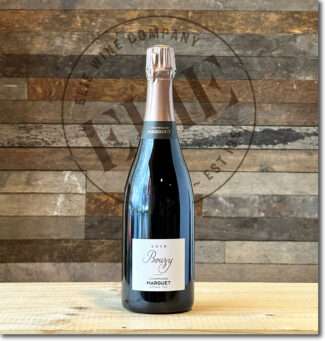 2018 Champagne Marguet Grand Cru Bouzy Rosé Brut Nature D-2/2023 ($95)
2018 Champagne Marguet Grand Cru Bouzy Rosé Brut Nature D-2/2023 ($95)
75% Pinot Noir, 25% Chardonnay from the chalky Bouzy terroir. Fermentation (on native yeast) and élevage is done in neutral oak and the wine is barrel-aged with long lees contact and full malolactic. The wine is juicy with ripe red berries and shows a fine bead that permeates a creamy, yet lively texture.
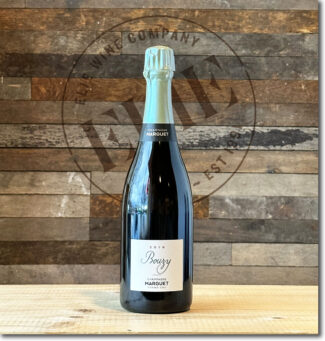 2018 Champagne Marguet Grand Cru Bouzy Brut Nature D-2/2023 ($90)
2018 Champagne Marguet Grand Cru Bouzy Brut Nature D-2/2023 ($90)
Fewer than 200 cases of this 100% Pinot Noir, zero-dosage Champagne from Benoît’s scant two acres in Bouzy. Having remained on lees for almost four years, the result is an opulent, powerful champagne with apple and yeast aromas and the slightly oxidative style Marguet is known for.
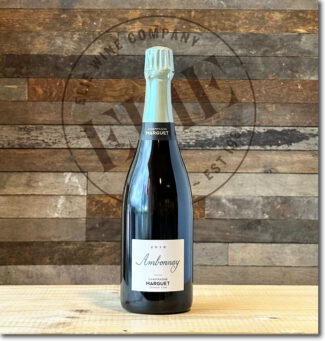 2018 Champagne Marguet Grand Cru Ambonnay Brut Nature D-3/2023 ($90)
2018 Champagne Marguet Grand Cru Ambonnay Brut Nature D-3/2023 ($90)
63% Pinot Noir and 37% Chardonnay that features a charming, biscuity nose with dried apple and lemon verbena braced by pure, shivery acidity and an underlying minerality.
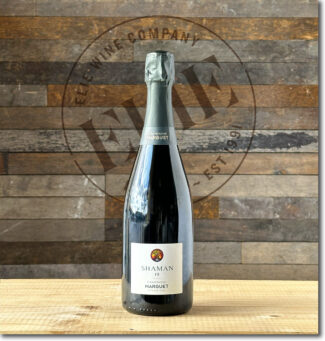 Champagne Marguet ‘Shaman 2019’, Grand Cru Brut Nature D-1/2023 ($66)
Champagne Marguet ‘Shaman 2019’, Grand Cru Brut Nature D-1/2023 ($66)
Grand Crus Ambonnay and Bouzy. 75% Pinot Noir and 25% Chardonnay. The nose shows candied ginger, dried flowers and orange blossom while the palate is creamy with marzipan, citrus and a salted nut finish.
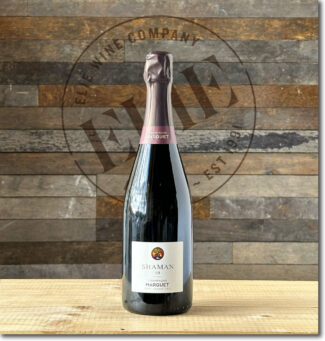 Champagne Marguet ‘Shaman 2019’, Grand Cru Rosé Brut Nature D-10/2022 ($66)
Champagne Marguet ‘Shaman 2019’, Grand Cru Rosé Brut Nature D-10/2022 ($66)
Grand Crus Ambonnay and Bouzy. 77% Chardonnay, 23% Pinot Noir vinified separately; Marguet works with a Burgundy-like system of Cru selections of single-village wine in good years, and lieux-dits in the best years. Wild strawberries and tea show on the nose, with beautifully integrated tannins and a long, yeasty finish.
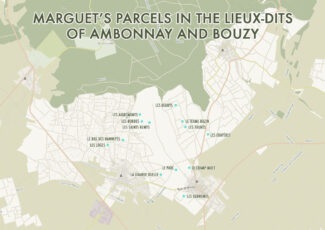
Site Specific Grand Cru Ambonnay
Whereas the ‘art’ of Champagne is often discussed in terms of expert blending—much as color is added in layers to create a portrait—a Cellar Master uses a pallet of flavors to create synergy, a whole that is greater than the sum of its parts. Traditionally, ‘house styles’ have been established over decades (even centuries) and homogeneity—in the best sense of the word—is the goal. Even vintage Champagne (assembled from a single harvest, though many villages may contribute) should highlight the house approach, since loyal customers expect as much.
So why are site-specific bottlings Champagnes growing popularity? In part because of the rising renown of grower/producers, who are highlighting individual plots of terroir that they themselves have developed. It is trendy (and completely correct) to regard Champagne as wine first and foremost, and as such, individual vineyard expression rather than cookie-cutter (however delicious) house style is simply a new way to view this old standby appellation.
Ambonnay’s vineyards are planted almost exclusively on south-facing slopes on the Montagne de Reims, mostly with Pinot Noir. Together with the vines of neighboring Aÿ and Bouzy, Ambonnay is the source of some of the most powerful Pinot Noir in Champagne; on the now-defunct ‘échelles des crus’, Ambonnay was rated 100%, making it a Grand Cru village.
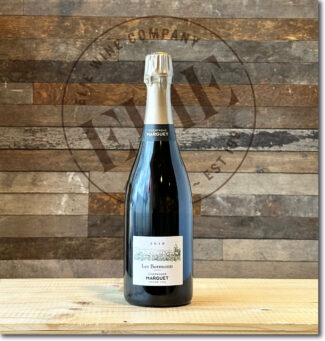 2018 Champagne Marguet Grand Cru Ambonnay ‘Les Bermonts’ Brut Nature D-3/2023 ($120)
2018 Champagne Marguet Grand Cru Ambonnay ‘Les Bermonts’ Brut Nature D-3/2023 ($120)
A Blanc de Blancs from Chardonnay vines planted in 1952 at the base the slope, unusual for a Grand Cru village noted for its Pinot Noir. The wine features tangerine zest, salt and citrus blossoms behind acacia honey and a vibrant chalk-driven finish.
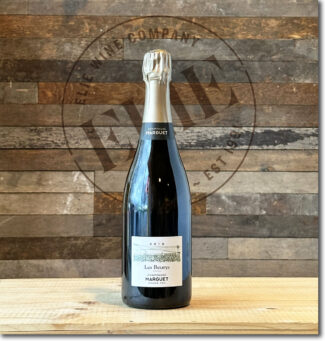 2018 Champagne Marguet Grand Cru Ambonnay ‘Les Beurys’ Brut Nature D-3/2023 ($120)
2018 Champagne Marguet Grand Cru Ambonnay ‘Les Beurys’ Brut Nature D-3/2023 ($120)
The east-facing chalky lieu-dit Les Beurys is slightly less than an acre of 35-year-old vines. The wine displays aromas of apricot, yellow plum and wild strawberry, currants with hints of spice, brioche, and white flower on the nose. Rich with great concentration on the palate, a juicy fruit core with a mineral edge, a fine and delicate mousse with great depth and a long spicy finish.
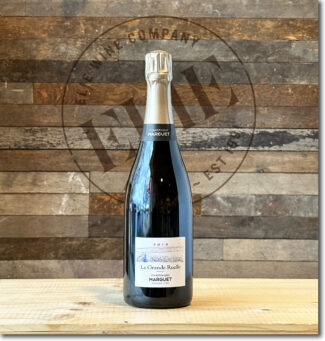 2018 Champagne Marguet Grand Cru Ambonnay ‘La Grande Ruelle’ Brut Nature D-3/2023 ($120)
2018 Champagne Marguet Grand Cru Ambonnay ‘La Grande Ruelle’ Brut Nature D-3/2023 ($120)
Marguet’s Ambonnay vineyard extends over 17 acres in the lieux-dits Les Saints Remys, Les Beurys, Les Crayères, La Grande Ruelle, Les Bermonts and Le Parc; ‘La Grande Ruelle’ 2018 is a blend of Pinot Noir (63%) and Chardonnay (37%) from a lieu-dit near Les Bermonts which Marguet believes in one of the best plots in Ambonnay. Planted in 1967, the vines thrive in deep soils. The draw took place in June 2019 and the wine was disgorged in March, 2023. The wine displays a great yeasty richness with stone fruit on the nose and a silken, elegant and precise palate.
Grand Cru Verzenay: Chalk About Champagne
It’s a fair bet that the citizens of Verzenay (oddly, called ‘bouquins and bouquines) love their windmill as much as the folks in Beaujolais’ Moulin-a-Vent love theirs. Verzenay’s sits on the Mont-Bœuf hill just west of the village and overlooks a portion of the vineland—1000 acres planted mostly to Pinot Noir. Verzenay Pinots tend to be darker in color than those of nearby Bouzy, where the slopes face south. Verzenay wines are also marked by a characteristic gaminess and an almost metallic undertone. And yet, at the same time, the north facing makes the wine somewhat lighter in weight and more tautly focused.
As usual, Verzenay’s terroir—beyond exposure—is about chalk, or more specifically, ‘super chalk’ built from the remains of microscopic, squid-like belemnites. This chalk sits near the surface in most of Champagne’s hallowed vineyard sites, including Grand Cru Verzenay, and here especially—Pinot Noir country—discredits the notion that such chalky substrate is better suited for Chardonnay.
But why? Above all else, chalk is a highly-efficient sponge, draining away excess water when it rains heavily but, crucially, storing water in times of drought. One cubic meter of pure chalk can store 660 liters of water, so vines in chalk can ride out not only heavy rains, but (increasingly) dangerous droughts which can strip the crop of its elegance and acidity.
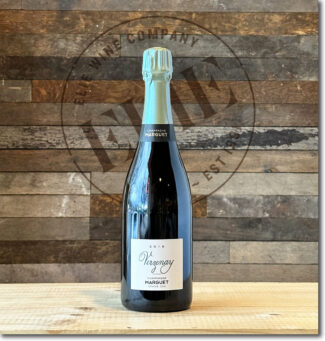 2018 Champagne Marguet Grand Cru Verzenay Brut Nature D-2/2023 ($90)
2018 Champagne Marguet Grand Cru Verzenay Brut Nature D-2/2023 ($90)
77% Pinot Noir and 23% Chardonnay. The nose is expressive with pretty aromas of stone fruit, pear skin, and wet stone; the palate is ripe and concentrated with Rainier cherry and Mirabelle plum. 2072 bottles produced.
The Sapience Project
Aided by a handful of like-minded individuals and completed in Marguet’s winery (with the help of Hervé Jestin), the Sapience Project utilizes the three dominant grapes of Champagne from biodynamic producers—Chardonnay from David Léclepart, Pinot Noir from Benoît Lahaye (and later from Marguet) and Pinot Meunier from Vincent Laval.
The first super-cuvée was in the 2006 vintage, and was named for the patience and experience to reach a full understanding of both the flavors and the concept.
Marguet’s spirit watches over the bottling, which occurs some 9 years from the harvest. It is a labor of love, a wine to ponder, to embrace, and to spend time with, to watch evolve, as the producers involved largely crafted this wine by virtue of decades of dedication to farming.
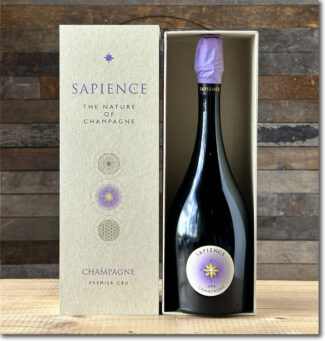 2014 Champagne Marguet ‘Sapience’ Premier Cru Brut Nature D-3/2023 ($200)
2014 Champagne Marguet ‘Sapience’ Premier Cru Brut Nature D-3/2023 ($200)
Opinions of the 2014 vintage were mixed at the outset (plenty of rain fell throughout the summer) but at disgorgement, the wines have proven sturdy and delightful. 50% Chardonnay, 25% Pinot noir and 25% Meunier, the wine is a study in elegance brightened with freshness, showing creamy lemon curd, spring flowers, hazelnut and a trace of smokiness.
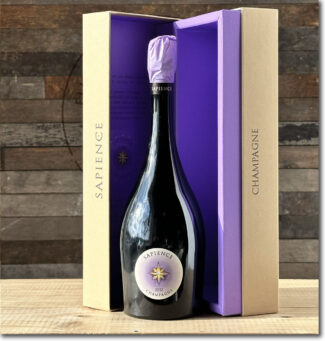 2012 Champagne Marguet ‘Sapience’ Premier Cru Brut Nature D-03-2022 ($200)
2012 Champagne Marguet ‘Sapience’ Premier Cru Brut Nature D-03-2022 ($200)
2012 was an excellent vintage for Champagne was despite the growing season throwing enough curve balls to make most producers nervous. Here, the base wine spends two years aging on forest-selection barrels before the second fermentation. With fewer than 3000 bottles made, it is rare, and has consistently been rated as highly as (or higher than) Salon and Krug.
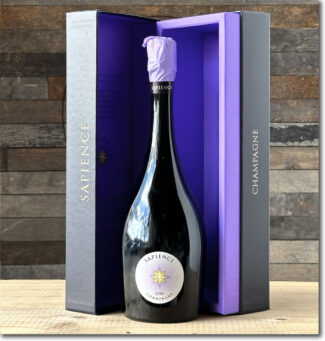 2010 Champagne Marguet ‘Sapience’ Premier Cru Brut Nature D-01-2020 ($220)
2010 Champagne Marguet ‘Sapience’ Premier Cru Brut Nature D-01-2020 ($220)
A blend of 50% Chardonnay, 25% Meunier and 25% Pinot Noir from vintages 2006, 2007, 2008, 2009, 2010, 2011 and 2012, the wine is a cooperative effort between four top biodynamic growers, Benoît Marguet, Benoît Lahaye, Vincent Laval and David Leclepart: Leclepart provided the Chardonnay, Lahaye the Pinot Noir and Laval the Meunier, while the vinification was done in Marguet’s cellar. The base wine spends two years aging in barrels before the second fermentation in bottle. With the balance and effortlessness of the best grand marques and the depth of terroir of the best grower Champagnes, the wine provides a creamy nose with hints of dried fruit; warm nut-bread flavors on the palate that are in absolute harmony with the wine’s vibrant minerality.
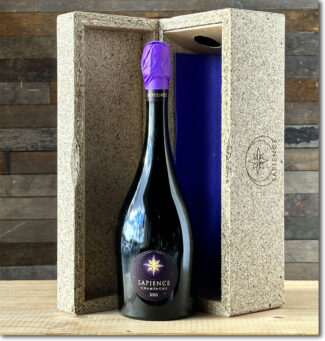 2010 Champagne Marguet ‘Sapience Oenothèque’ Premier Cru Brut Nature D-3/2023 ($280)
2010 Champagne Marguet ‘Sapience Oenothèque’ Premier Cru Brut Nature D-3/2023 ($280)
Produced only in 2007, 2008, 2009 and 2010, this meticulously crafted wine is a blend of 50% Chardonnay, 25% Meunier and 25% Pinot Noir from prized terroirs in Trépail, Cumières and Bouzy. Disgorged in September 2020 and bottled without dosage, the 2010 Brut Nature Premier Cru offers aromas of fresh pastry, golden apples, white flowers and walnuts followed by a full-bodied, layered and concentrated palate that’s vinous and intense with elegant structure and a sapid finish.
Notebook ….
Drawing The Boundaries of The Champagne Region
Having been defined and delimited by laws passed in 1927, the geography of Champagne is easily explained in a paragraph, but it takes a lifetime to understand it.
Ninety-three miles east of Paris, Champagne’s production zone spreads across 319 villages and encompasses roughly 85,000 acres. 17 of those villages have a legal entitlement to Grand Cru ranking, while 42 may label their bottles ‘Premier Cru.’ Four main growing areas (Montagne de Reims, Vallée de la Marne, the Côte des Blancs and the Côte des Bar) encompass nearly 280,000 individual plots of vines, each measuring a little over one thousand square feet.
The lauded wine writer Peter Liem expands the number of sub-regions from four to seven, dividing the Vallée de la Marne into the Grand Vallée and the Vallée de la Marne; adding the Coteaux Sud d’Épernay and combining the disparate zones between the heart of Champagne and Côte de Bar into a single sub-zone.
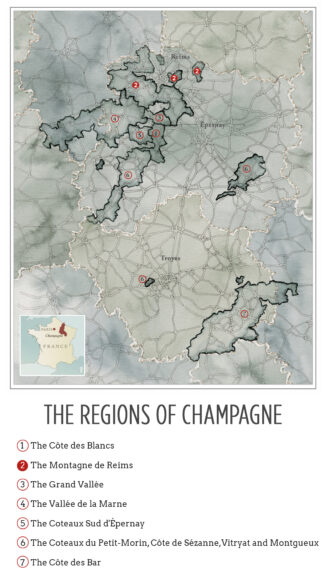
Lying beyond even Liem’s overview is a permutation of particulars; there are nearly as many micro-terroirs in Champagne as there are vineyard plots. Climate, subsoil and elevation are immutable; the talent, philosophies and techniques of the growers and producers are not. Ideally, every plot is worked according to its individual profile to establish a stamp of origin, creating unique wines that compliment or contrast when final cuvées are created.
Champagne is predominantly made up of relatively flat countryside where cereal grain is the agricultural mainstay. Gently undulating hills are higher and more pronounced in the north, near the Ardennes, and in the south, an area known as the Plateau de Langres, and the most renowned vineyards lie on the chalky hills to the southwest of Reims and around the town of Épernay. Moderately steep terrain creates ideal vineyard sites by combining the superb drainage characteristic of chalky soils with excellent sun exposure, especially on south and east facing slopes.

Single Harvest vs. Vintage
In France, under Appellation d’Origine Contrôlée (AOC) rules, vintage Champagnes must be aged for three years—more than twice the required aging time for NV Champagne. The additional years on the yeast is said to add complexity and texture to the finished wine, and the price commanded by Vintage Champagne may in part be accounted for by the cellar space the wine takes up while aging.
On the other hand, a Champagne maker might prefer to release wine from a single vintage without the aging requirement; the freshness inherent in non-vintage Champagnes is one of its effervescent highlights. In this case, the wine label may announce the year, but the Champagne itself is referred to as ‘Single Harvest’ rather than ‘Vintage’.
A Gift That Keeps On Giving
Membership To ‘The Champagne Society’
Bimonthly Subscription
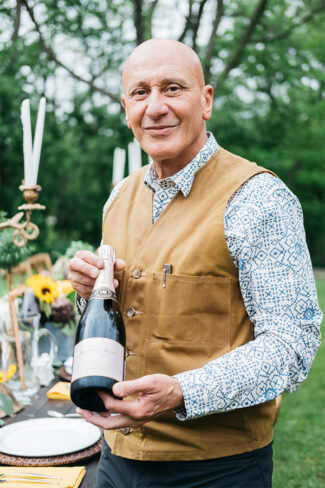 Not only is Champagne the quintessential drink of celebration, it has traditionally been a gift given with ramped-up sentiments. This year we are offering a couple of variations on this theme, beginning with an opportunity to gift a special someone a six-month or twelve-month membership to The Champagne Society. Our pick for December will be packaged in a wrap-ready gift box along with a congratulatory certificate explaining what lies ahead in bi-monthly installments. For more information please visit our website page: A Holiday Gift: ‘The Champagne Society’ Membership 6-Month ($299) or 12-Month ($589) Subscription.
Not only is Champagne the quintessential drink of celebration, it has traditionally been a gift given with ramped-up sentiments. This year we are offering a couple of variations on this theme, beginning with an opportunity to gift a special someone a six-month or twelve-month membership to The Champagne Society. Our pick for December will be packaged in a wrap-ready gift box along with a congratulatory certificate explaining what lies ahead in bi-monthly installments. For more information please visit our website page: A Holiday Gift: ‘The Champagne Society’ Membership 6-Month ($299) or 12-Month ($589) Subscription.
Elie
- - -
Posted on 2023.12.01 in France, The Champagne Society, Champagne
Featured Wines
- Notebook: A’Boudt Town
- Saturday Sips Wines
- Saturday Sips Review Club
- The Champagne Society
- Wine-Aid Packages
Wine Regions
Grape Varieties
Aglianico, Albarino, Albarín Blanco, Albarín Tinto, Albillo, Aleatico, Arbanne, Aubun, Barbarossa, barbera, Beaune, Biancu Gentile, bourboulenc, Cabernet Franc, Cabernet Sauvignon, Caino, Caladoc, Calvi, Carcajolu-Neru, Carignan, Chablis, Chardonnay, Chasselas, Clairette, Corvina, Cot, Counoise, Erbamat, Ferrol, Fiano, Frappato, Friulano, Fromenteau, Fumin, Garnacha, Gewurztraminer, Godello, Graciano, Grenache, Grolleau, Groppello, Juan Garcia, Lambrusco, Loureira, Macabeo, Macabou, Malvasia, Malvasia Nera, Marsanne, Marselan, Marzemino, Melon de Bourgogne, Merlot, Mondeuse, Montanaccia, Montepulciano, Morescola, Morescono, Moscatell, Muscadelle, Muscat, Natural, Nero d'Avola, Parellada, Patrimonio, Petit Meslier, Petit Verdot, Pineau d'Aunis, Pinot Auxerrois, Pinot Blanc, Pinot Gris, Pinot Meunier, Pinot Noir, Poulsard, Prieto Picudo, Rondinella, Rousanne, Roussanne, Sangiovese, Sauvignon Blanc, Savignin, Semillon, Souson, Sparkling, Sumoll, Sylvaner, Syrah, Tannat, Tempranillo, Trebbiano, Trebbiano Valtenesi, Treixadura, Trousseau, Ugni Blanc, vaccarèse, Verdicchio, Vermentino, Viognier, Viura, Xarel-loWines & Events by Date
- April 2024
- March 2024
- February 2024
- January 2024
- December 2023
- November 2023
- October 2023
- September 2023
- August 2023
- July 2023
- June 2023
- May 2023
- April 2023
- March 2023
- February 2023
- January 2023
- December 2022
- November 2022
- October 2022
- September 2022
- August 2022
- July 2022
- June 2022
- May 2022
- April 2022
- March 2022
- February 2022
- January 2022
- December 2021
- November 2021
- October 2021
- September 2021
- August 2021
- July 2021
- June 2021
- May 2021
- April 2021
- March 2021
- February 2021
- January 2021
- December 2020
- November 2020
- October 2020
- September 2020
- August 2020
- July 2020
- June 2020
- May 2020
- April 2020
- March 2020
- February 2020
- January 2020
- December 2019
- November 2019
- October 2019
- September 2019
- August 2019
- July 2019
- June 2019
- May 2019
- April 2019
- March 2019
- February 2019
- January 2019
- December 2018
- November 2018
- October 2018
- September 2018
- August 2018
- July 2018
- June 2018
- May 2018
- April 2018
- March 2018
- February 2018
- January 2018
- December 2017
- November 2017
- October 2017
- September 2017
- August 2017
- July 2017
- June 2017
- May 2017
- April 2017
- March 2017
- February 2017
- January 2017
- December 2016
- November 2016
- October 2016
- September 2016
- August 2016
- July 2016
- June 2016
- May 2016
- April 2016
- March 2016
- February 2016
- January 2016
- December 2015
- November 2015
- October 2015
- September 2015
- August 2015
- July 2015
- June 2015
- May 2015
- April 2015
- March 2015
- February 2015
- January 2015
- December 2014
- November 2014
- October 2014
- September 2014
- August 2014
- July 2014
- June 2014
- April 2014
- March 2014
- February 2014
- January 2014
- December 2013
- November 2013
- October 2013
- September 2013
- August 2013
- July 2013
- June 2013
- May 2013
- April 2013
- March 2013
- February 2013
- January 2013
- December 2012
- November 2012
- October 2012
- February 2004
Search


